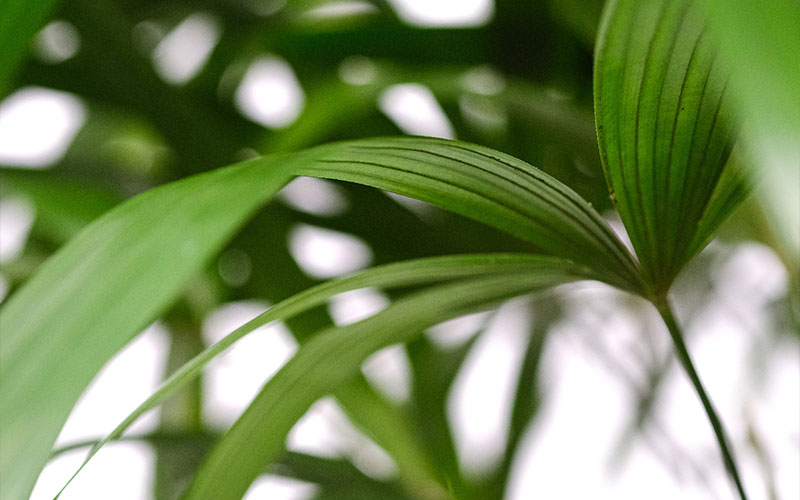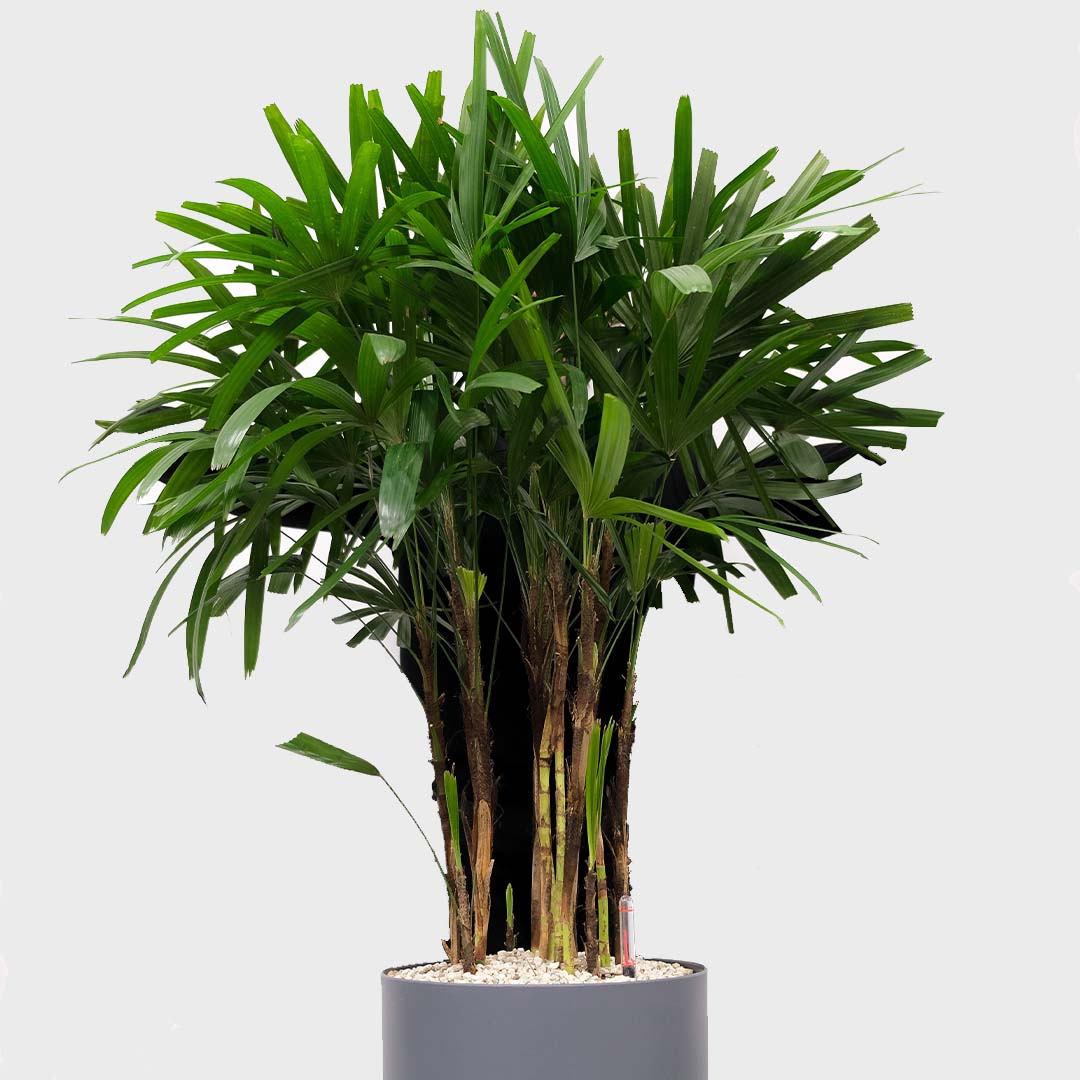
Deliver to
Belgium
 English
English

The Rhapis Palm is a palm species that grows in dense clumps of stalks, at the end of which fan-shaped glossy green blunt leaves grow. The fronds grow out of fibrey brown stems that grow upright. Rhapis palms are usually kept indoors, because it is tolerant to low light conditions and has a slow growth rate. The palm grows less than 30 cm each year!
Medium light
Water every 2 weeks
Non-Toxic
Air-purifying
The Lady palm likes to be placed in a spot with enough shade. Lady palms can't tolerate direct sunlight. The more shade the plant gets, the darkeer te leaves will be. If the Lady palm doesn't receive enough light the leaves will begin to turn brown.
Lady palms can be tolerant to droughts. You should only water when the top 30 centimetres of the soil is dry. Water once every 10 days in summer, and every 2 weeks in winter. Make sure that the water can drain away well. Otherwise, water will remain in the bottom of the flowerpot and your Lady palm may suffer from root rot.
The Lady palm uses extra energy from spring onwards to make new leaves. As a result, the plant needs extra nutrients. You can provide these nutrients by plant nutrition. We recommend giving plant nutrition once a month. From spring until autumn. When the tips of the leaves turn black, you should reduce the amount of fertilizer. After autumn and in winter it is better not to give extra nutrients. In the autumn, plant nutrition can actually be harmful for the Lady palm!
Repotting the Lady palm is necessary every 2 years. Repotting the plant every 2 years gives it new nutrients and more room for root growth. The airier soil is also very good for the water flowing through. The best period to repot is spring.
The ideal temperature for a Rhapis palm is typically between 15 to 27 degrees Celsius. It thrives in average room temperatures. Rhapis palms can tolerate higher or lower temperatures as well, but exposure to extreme temperatures can affect their growth and overall health.
Over time, Rhapis palms may naturally shed older or damaged leaves. These leaves will turn yellow or brown. You can prune off these leaves at the base of the stem. Removing these damaged leaves helps maintain the plant's appearance and prevents the risk of fungal or pest issues.
The Lady palm is not excessively susceptible to diseases and pests. Should the plant still suffer from pests, then you can use pesticide. Although pesticide can mean the end of the plant. Therefore, be careful.

